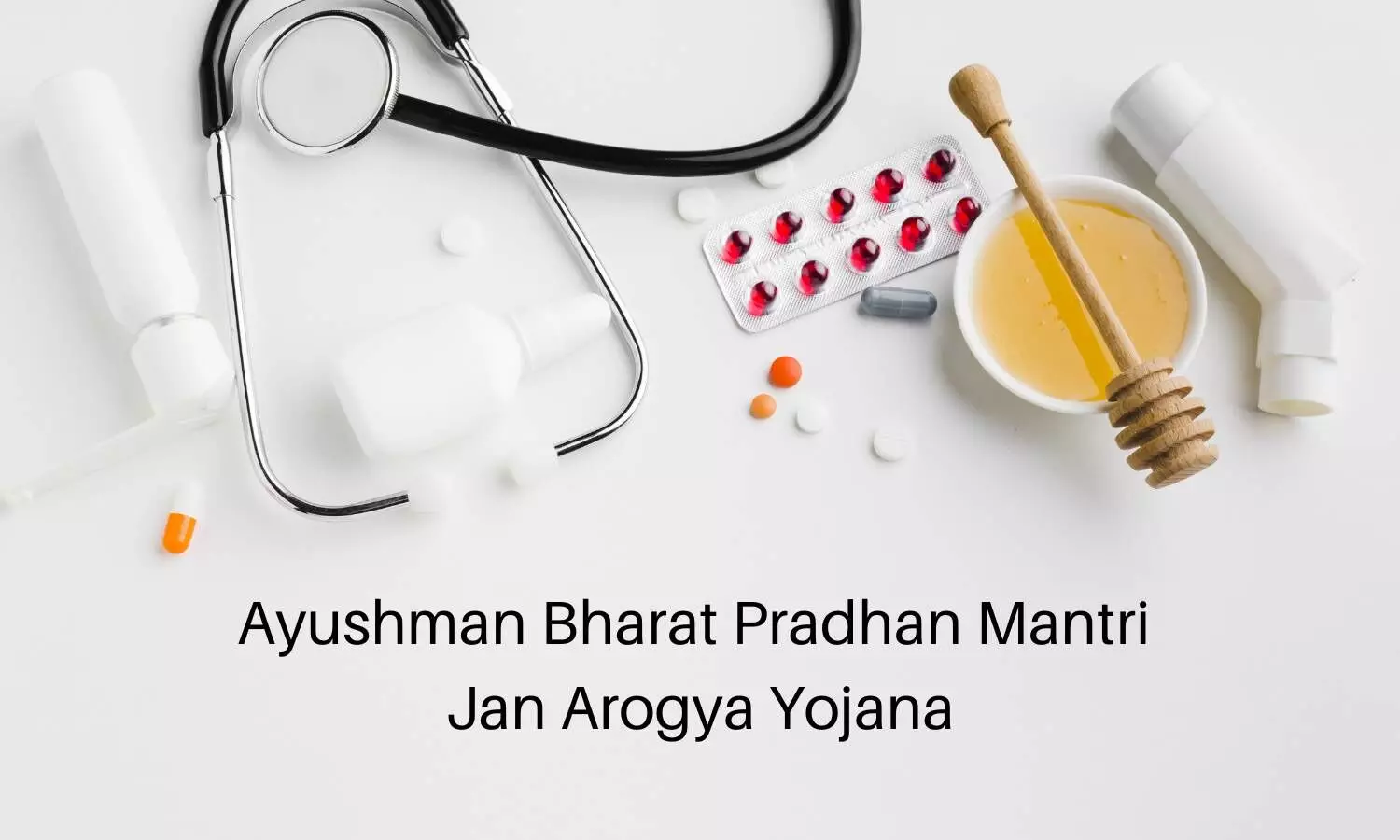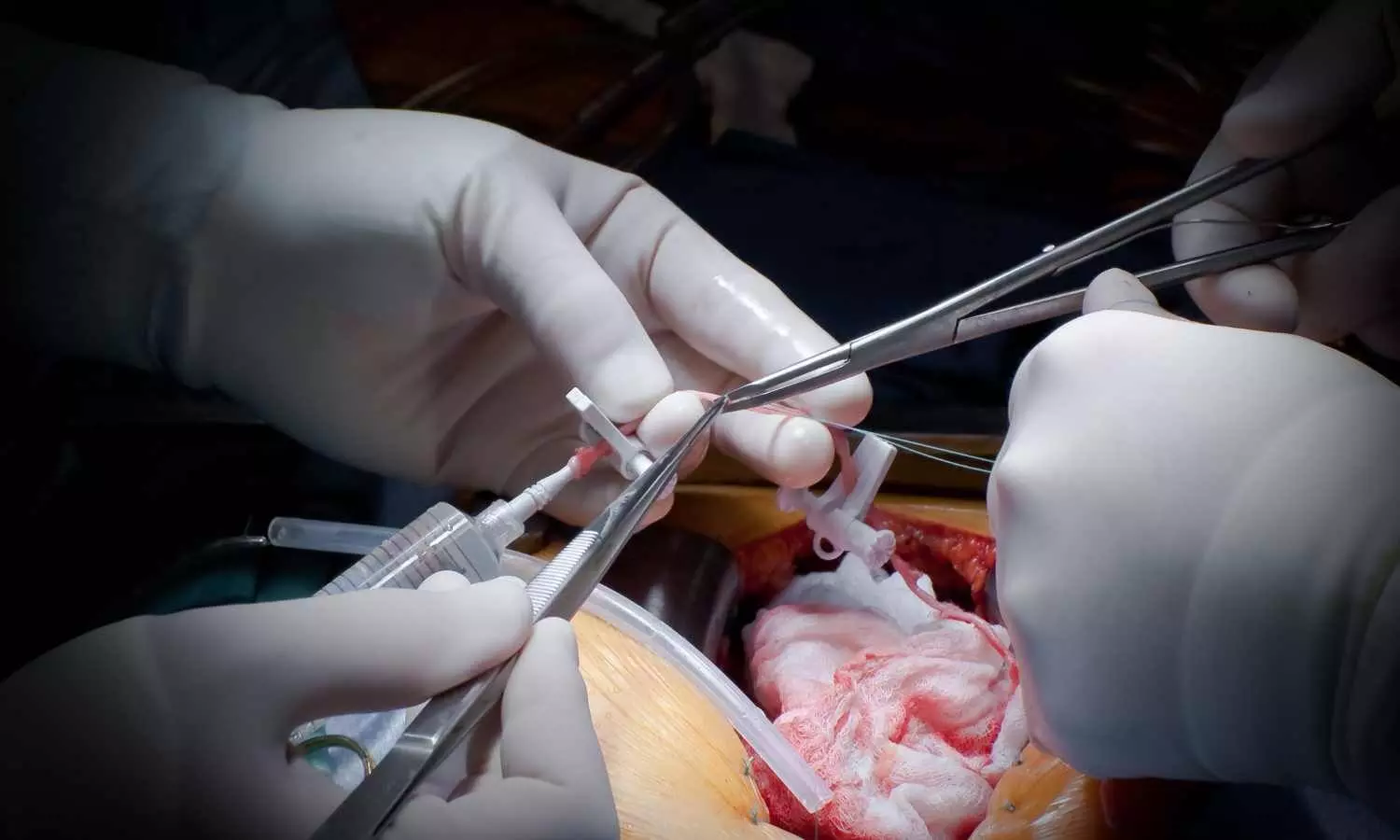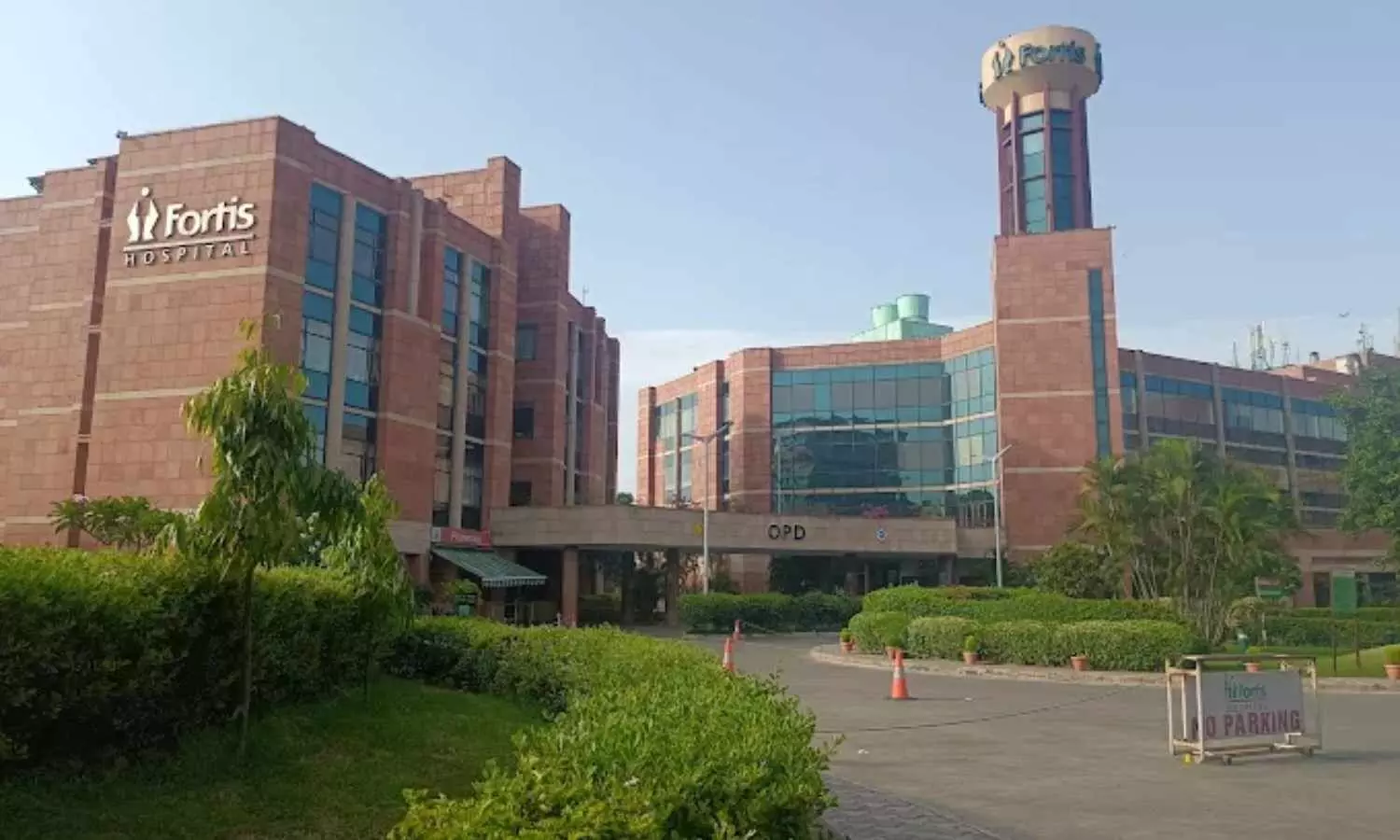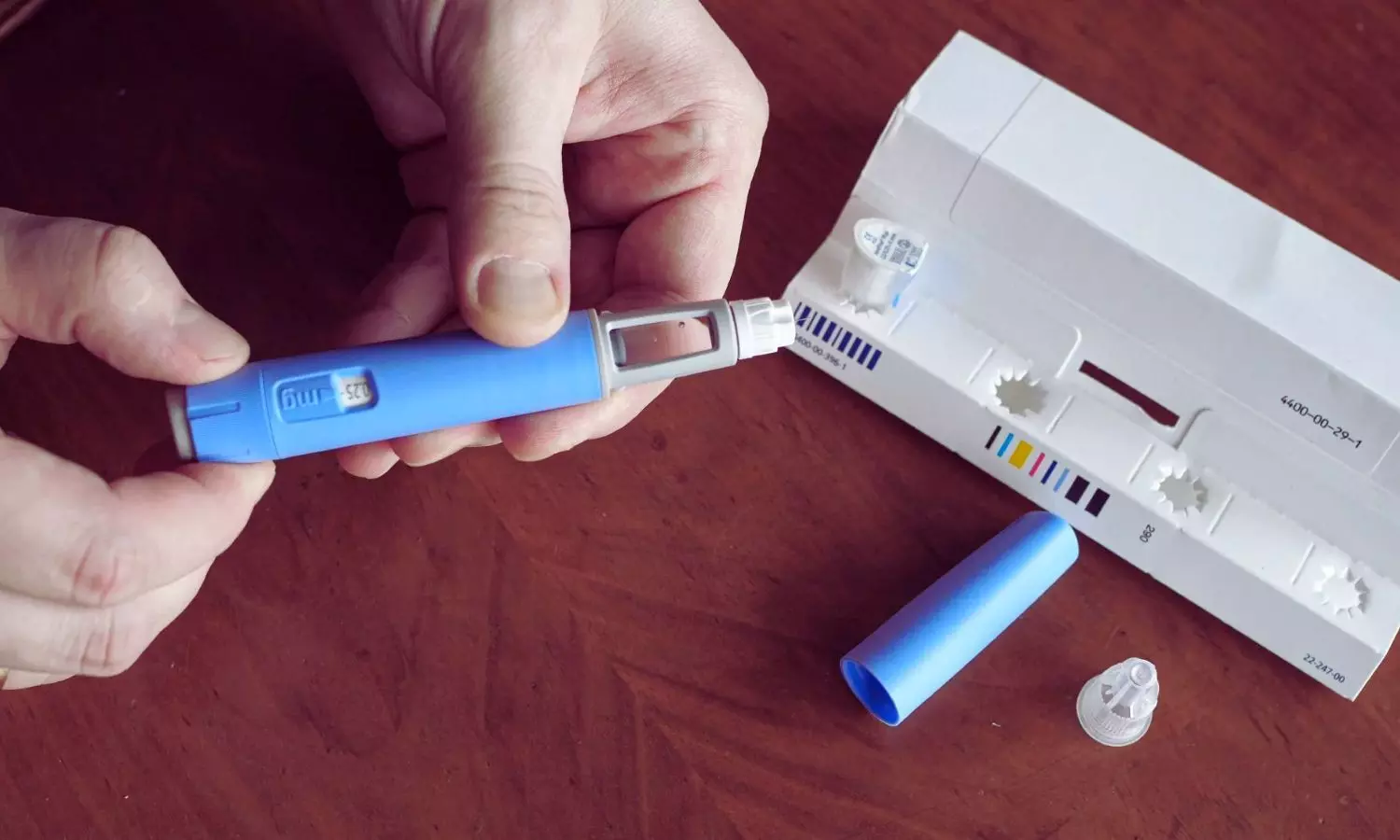Is your heart aging too fast? MRI technique reveals how unhealthy lifestyles can add decades
Powered by WPeMatico
Powered by WPeMatico
Powered by WPeMatico
Powered by WPeMatico
Powered by WPeMatico

Ahmedabad: In a significant development, the Gujarat health department has appointed four senior doctors to key administrative positions in the state’s medical colleges and hospitals on a temporary basis.
In Ahmedabad, Dr Meenakshi Parikh, who currently serves as the director of postgraduate (PG) studies at BJ Medical College, has been given the additional responsibility of dean. Alongside her, Dr Dharmesh Patel, a forensic medicine professor and the additional dean, will now take over as the PG director.
Also read- AP appoints 6 new Principals, 5 Superintendents at Govt Medical College Hospitals
In Vadodara, Dr R G Iyer, the dean of SSG Hospital, has been assigned the additional charge of the hospital’s medical superintendent. Similar interim arrangements are in place for the Paraplegia Institute and the Civil Hospital.
In a separate development, Dr Haribhai R Kataria, dean of the faculty of science at Maharaja Sayajirao University of Baroda, has been appointed as the vice-chancellor of Shri Guru Gobind University in Godhra.
His five-year term will begin from the date he joins, as outlined in the Gujarat Public Universities Act, 2023. He replaces former vice-chancellor Pratapsinh Chauhan, who was granted a one-year extension before stepping down.
The current administrative setup shows a growing trend of handling key positions through temporary or additional charges rather than making permanent appointments. TOI report suggests that this approach is being followed in medical colleges and hospitals across cities like Rajkot, Jamnagar, Bhavnagar, and others.
Meanwhile, doctors and healthcare experts have raised concerns about temporary appointments in important roles, saying these could affect how key decisions are made in medical colleges.
Medical Dialogues recently reported that the Delhi government has appointed and transferred 26 senior medical officials, including medical superintendents, principals and medical directors from their current postings to major government hospitals across the capital. The major healthcare institutions included Lok Nayak Hospital, Guru Teg Bahadur (GTB) Hospital, Deen Dayal Upadhyay Hospital, Dr. Baba Saheb Ambedkar Hospital, and GB Pant Hospital.
Also read- 26 senior doctors transferred, major overhaul at Delhi Hospitals
Powered by WPeMatico

Ahmedabad: While the Gujarat government celebrates the success of the Ayushman Bharat Digital Mission (ABDM) and highlights its achievement of enrolling nearly 70% of the state’s population under the Ayushman Bharat Health Account, a growing number of medical professionals and hospital administrators are raising alarms over serious systemic failures.
Despite over 4.77 crore citizens registered under the Ayushman Bharat Health Account (ABHA), many doctors are backing out of the Pradhan Mantri Jan Arogya Yojana (PM-JAY), citing irregular and delayed payments by third-party administrators (TPAs) that have left healthcare providers cash-strapped.
Several private practitioners and small hospitals reported that operating under the scheme has become financially unsustainable. One such case is that of Dr. Ramesh Patel, an orthopedic surgeon who ran a 15-bed facility in Palanpur. After facing a loss of nearly Rs. 4 lakhs while treating patients covered by PM-JAY, Dr. Patel has decided not to renew his hospital’s participation in the scheme, reports Ahmedabad Mirror. “I was to recover Rs 12 lakh under the PM-JAY scheme, but I was paid only Rs 8 lakh. In spite of multiple representations to the TPA and government, I am still waiting for the remaining payment,” said Dr Patel.
According to the Daily, healthcare professionals in Ahmedabad echo similar concerns. Many have voiced opposition to existing regulations, such as the stipulation that 30% of cases must be trauma-related before Total Knee Replacement (TKR) procedures can be approved. This has significantly hindered their ability to offer effective treatment. The Ahmedabad Hospitals and Nursing Homes Association (AHNA) has submitted a formal appeal to the Gujarat government, urging a review of policies to reflect clinical realities and improve operational sustainability.
All over the country, many ABHA-empanelled hospitals are denying patients due to a hefty number of unpaid dues. Medical Dialogues had earlier reported that a total outstanding amount of Rs 1,21,61,45,63,617 (₹1.21 lakh crore) remains unpaid to empanelled hospitals under the Ayushman Bharat scheme (AB-PMJAY), with more than 63 lakh pending claims yet to be cleared, revealed the data shared by the National Health Authority (NHA) in response to a RTI application.
Powered by WPeMatico

‘No-touch’ vein harvesting significantly reduces the risk of graft failure up to three years after coronary artery bypass surgery compared with conventionally harvested vein grafts, finds a study from China published by The BMJ today.
The no-touch technique also translates into meaningful clinical benefits for patients, such as lower rates of heart attacks and need for repeat revascularisation (a procedure to restore blood flow to blocked veins), say the researchers.
A coronary artery bypass graft (CABG) is a surgical procedure used to improve blood flow and oxygen supply to the heart in patients with coronary heart disease. It involves grafting a healthy blood vessel from another part of the body (usually the saphenous vein in the lower leg) to the coronary artery.
The conventional vein harvesting technique, which strips the vein of surrounding tissue before grafting, is linked to high graft occlusion rates (where the vein becomes blocked or narrowed, impeding blood flow).
The no-touch technique, however, harvests the vein with a cushion of surrounding tissue and showed significantly lower occlusion rates at 3 and 12 months after surgery in the PATENCY trial. But the long-term effects of this technique are still uncertain.
To address this evidence gap, researchers carried out a three-year follow-up of the PATENCY trial to assess longer term outcomes of the no-touch vein harvesting technique compared with the conventional approach.
Their findings are based on 2,655 patients (average age 61; 22% women) undergoing CABG at seven cardiac surgery centres in China who were randomly assigned to receive no-touch vein harvesting (1,337) or the conventional technique (1,318).
At three years, the no-touch group showed a significantly lower vein graft occlusion rate than the conventional group (5.7% v 9%).
Several other outcomes – including rates of non-fatal heart attack, repeat revascularisation, recurrent angina, and readmission to hospital for cardiac reasons – were also significantly reduced in the no-touch group (1.2% v 2.7%, 1.1% v 2.2%, 6.2% v 8.4%, and 7.1% v 10.2% respectively), reinforcing the potential clinical benefits of the no-touch technique.
There were no significant differences in cause death or major adverse cardiac and cerebrovascular events.
The researchers acknowledge several limitations and say it is possible that these findings reflect random variation rather than a true biological effect. The study also focused on relatively young people in China, so findings may not apply to other nationalities and age groups.
However, they point out that results were consistent after further analyses and suggest they have important implications for clinical practice and guideline development.
They conclude: “This study provides robust evidence supporting the use of the no-touch technique to reduce the risk of vein graft occlusion, a critical factor in the long term success of CABG surgery. The decreased rates of vein graft occlusion observed in the no-touch group translate into meaningful clinical benefits, as demonstrated by the lower incidences of non-fatal myocardial infarction and repeat revascularisation.”
This study “provides important evidence on the durability and clinical outcomes associated with the no-touch technique,” writes Hui Jiang, professor of cardiac surgery at Shengjing Hospital of China Medical University, in a linked editorial.
Despite some study limitations and the need for ongoing follow-up and detailed assessment of individual clinical events, he says “these findings might help shape future surgical strategies and inform updates to clinical guidelines.”
Reference:
Tian M, Wang X, Feng W, Wang H, Liu S, Liu Z et al. No-touch versus conventional vein in coronary artery bypass grafting: three year follow-up of multicentre randomised PATENCY trial BMJ 2025; 389 :e082883 doi:10.1136/bmj-2024-082883.
Powered by WPeMatico

Mohali: Doctors at the Department of Bariatric and Metabolic Surgery, Fortis Hospital Mohali, have given a new lease of life to a 21-year-old man, who weighed 210 kgs and suffered from co-morbidities – Borderline diabetes (Pre-Diabetes) and sleep apnea, by performing a successful Robot-Aided Bariatric Surgery, also known as weight-loss surgery or metabolic surgery.
The surgery was performed under the clinical guidance of Dr Vitish Singla, Consultant, Department of Bariatric and Metabolic Surgery, Fortis Hospital Mohali.
From last couple of years, the patient had been in the pre-diabetic stage and was suffering from sleep apnea. If sleep apnea is not treated on time, it would further lead to pulmonary complications, hypertension and cardiac ailments in the later stages of his life.
As he was gaining weight over time and was experiencing difficulty in performing his daily routine, he visited Fortis Mohali with a hope to get back to his healthier self. The initial medical investigations revealed that the body weight of the patient is 210-kgs with Body Mass Index (BMI) of 74 kg/m2, which indicated that the patient was highly obese.
Dr Singla conducted Robot-Aided Bariatric Surgery (Sleeve gastrectomy) through which the size of the stomach pouch was reduced by 80%. The surgery lasted for 1.5 hours. His blood glucose levels stabilized within 24 hours post-operatively, and there has been a notable improvement in his obstructive sleep apnea following the surgery. The patient had a smooth post-operative recovery.
He was able to walk 6 hours after the surgery, was kept on oral liquids and was discharged on the second day post the surgery. The patient is expected to lose around 100 kgs over a period of the next 12-18 months with the help of the surgery.
Dr Guneet and Dr Gunjeet from Anesthesia team conducted the anesthesia smoothly. The patient did not require any ventilator support or ICU stay.
Discussing the case, Dr Singla, said, “We performed Bariatric Surgery because his BMI was more than 35 kg/m2 along with comorbidities. The latest indications of bariatric surgery include a BMI of more than 30kg/m2 along with obesity related comorbidities or a BMI of more than 35kg/m2 regardless of presence or absence of comorbidities. It has been observed that Asian population is more prone to visceral obesity (fat mainly in tummy region).
Therefore, in Indian/ Asian population, patients with a BMI of more than 27.5 kg/m2 should be considered for Bariatric Surgery especially if there is associated Type 2 Diabetes Mellitus. In such cases, restricted diet does not help in achieving long-term outcomes and does not lead to resolution of diabetes. Bariatric surgery is the most effective option for such patients as it leads to sustainable weight loss and cure of Type 2 Diabetes Mellitus.”
Also Read:Fortis acquires Shrimann Superspecialty Hospital in Jalandhar for Rs 462 crore
Powered by WPeMatico

Italy: A recent multicentre real-world study supports the long-term effectiveness of once-weekly semaglutide as a valuable addition to treatment regimens for type 2 diabetes (T2D), even in patients already receiving insulin.
The study, published in Diabetes/Metabolism Research and Reviews, highlights semaglutide’s ability to significantly improve glycaemic control, promote weight loss, and reduce cardiovascular risk factors. Notably, it also offers the potential for insulin dose reduction or complete discontinuation, underscoring its role in simplifying diabetes management while enhancing overall treatment outcomes.
The advent of glucagon-like peptide 1 receptor agonists (GLP-1RAs) has opened promising new pathways in managing type 2 diabetes (T2D), focusing on achieving optimal glycaemic control while reducing the overall treatment burden. In this context, a multicentre retrospective real-world study was conducted to evaluate the long-term effectiveness of once-weekly semaglutide in patients with T2D who were already receiving insulin therapy.
Benedetta Maria Bonora, Department of Medicine, University of Padova, Padua, Italy, and colleagues aimed to determine whether semaglutide could enhance glycaemic and weight outcomes but also offer the potential for insulin dose reduction or discontinuation, ultimately simplifying diabetes management.
For this purpose, the researchers included individuals with type 2 diabetes who were on basal and/or bolus insulin and had initiated once-weekly semaglutide at 18 specialist care centers. Retrospective data were collected on baseline clinical characteristics, along with follow-up values of HbA1c and body weight.
The primary outcome was the change in HbA1c, assessed using a mixed model for repeated measures, while secondary outcomes focused on changes in body weight, insulin dose adjustments, and rates of insulin discontinuation.
The study revealed the following findings:
“The findings from this long-term real-world study reinforce the role of once-weekly semaglutide as a valuable addition to insulin-based regimens for type 2 diabetes,” the authors stated. They further noted that the therapy supports effective glycaemic and weight control and holds the potential for reducing or even discontinuing insulin doses, along with possible improvements in cardiovascular risk factors.
Reference:
Bonora, B. M., Giaccari, A., Consoli, A., Broglio, F., Avogaro, A., & Fadini, G. P. (2025). Long-Term Effectiveness of Once-Weekly Semaglutide in Patients With Type 2 Diabetes Previously Treated With Insulin. A Multicentre Real-World Study. Diabetes/Metabolism Research and Reviews, 41(4), e70045. https://doi.org/10.1002/dmrr.70045
Powered by WPeMatico

An international study led by the director of Virginia Commonwealth University’s liver institute suggests that the substance in Ozempic and Wegovy can halt and even reverse a common liver disease that affects millions worldwide.
Led by Arun Sanyal, M.D., of the Stravitz-Sanyal Institute for Liver Disease and Metabolic Health, and Philip Newsome, Ph.D., of King’s College London, researchers are exploring the potential of semaglutide to treat people with metabolic dysfunction-associated steatohepatitis, or MASH. They reported their results from a phase 3 clinical trial in this week’s New England Journal of Medicine.
“The results from this landmark study across 37 countries provide strong evidence that semaglutide can help patients with MASH by not only improving liver health, but also addressing the underlying metabolic issues that contribute to the disease,” said Sanyal, who is the lead author on the new paper and is also a professor of medicine at the VCU School of Medicine.
An estimated 15 million Americans have the liver disease MASH, which occurs when fat builds up in the liver, leading to inflammation and scarring. Currently, there is only one FDA-approved treatment available, increasing the urgency for effective therapeutic options.
“If approved, this could offer an additional therapeutic option for patients with MASH and fibrosis,” Sanyal added. “This is crucial, given the strong link between MASH and cardiovascular, metabolic, and renal conditions, where semaglutide has already shown established health benefits.”
MASH is closely linked to metabolic risk factors like obesity, type 2 diabetes, and high blood pressure. Over time, MASH can lead to liver fibrosis, cirrhosis, and even liver failure that requires a liver transplant, making it a major public health concern.
Of the 800 participants in the “Effect of Semaglutide in Subjects with Non-cirrhotic Non-alcoholic Steatohepatitis” (ESSENCE) trial, 534 were assigned to take semaglutide and 266 were in a placebo group:
• About 63% semaglutide users experienced a reduction in liver inflammation without worsening scarring, compared to only 34% of the placebo group.
• Almost 37% of those on semaglutide showed less liver scarring, compared to nearly 23% in the placebo group.
• About a third of semaglutide users achieved both inflammation reduction and scarring improvement, more than double compared to those taking the placebo.
• The drug also helped participants with weight loss, improved liver markers, and boosted overall heart health – with no major differences in serious side effects compared to those not taking it.
The ultimate goal for researchers in the ESSENCE trial is to find the right balance of semaglutide to resolve the damage caused by the fat buildup in the liver (steatohepatitis) while at the same time improve the scarring (fibrosis). Both are crucial for improving liver health in patients with MASH.
Semaglutide is a GLP-1 receptor agonist medication. Wegovy and Ozempic are brand names for semaglutide and are approved to promote weight loss, improve blood sugar control, and enhance metabolic health. Sanyal and other researchers are studying several GLP-1 receptor agonists and related drugs as potential treatments that might help halt, improve or even reverse the damage caused by MASH.
“The ESSENCE data may represent key findings for patients in the treatment of MASH, which is estimated to affect about one in 20 adults in the U.S.,” Sanyal said. “By treating both liver disease and its metabolic causes, semaglutide offers a promising new approach for millions of patients.”
The clinical trial involved participants with moderate to advanced liver scarring who were treated for 72 weeks with either 2.4 milligrams weekly injections of semaglutide or a placebo. Most participants tolerated semaglutide well. Nearly 90% of participants remained on the medication after 72 weeks. The most common side effects were mild digestive issues, such as nausea.
In the second part of this clinical trial, researchers led by Sanyal will follow nearly 1,200 participants from 37 countries for up to five years to gather data on semaglutide’s impact on long-term liver complications.
Semaglutide, manufactured by Novo Nordisk, belongs to a class of drugs called GLP-1 receptor agonists. Ozempic and Wegovy are brand names for semaglutide and are approved by the U.S. Food and Drug Administration for different conditions.
Semaglutide is not approved to treat MASH in the U.S. Pharmaceutical maker Novo Nordisk has said it plans to seek regulatory approval for its use in treating liver disease sometime this year.
Reference:
Arun J. Sanyal, M.D., Philip N. Newsome, M.B., Ch.B., Ph.D., Iris Kliers, Phase 3 Trial of Semaglutide in Metabolic Dysfunction–Associated Steatohepatitis, New England Journal of Medicine, DOI: 10.1056/NEJMoa2413258.
Powered by WPeMatico
